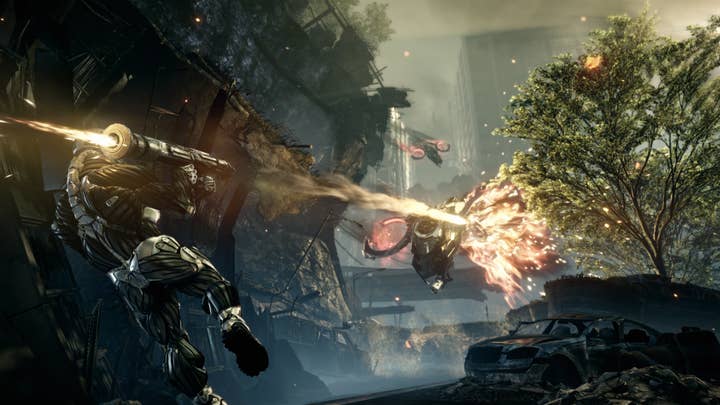In Theory: The Challenge of the Ten-Year Lifecycle
Will we still be playing PS3 and Xbox 360 in 2016?
Recent rumour-mongering that both Sony and Microsoft would be announcing next-gen hardware at this year's E3 has brought into sharp focus the oft-repeated claim that both Xbox 360 and PlayStation 3 were designed with "ten-year lifecycles" in mind.
"Andy (House) is absolutely right in that we are not making any announcements at E3. I've always said a 10-year life cycle for PS3, and there is no reason to go away from that," Sony CEO Kaz Hirai told the Wall Street Journal during CES in response to the latest round of rumours. Hirai was referencing an earlier denial that SCE president Andrew House delivered to CVG.
"I don't think we're contemplating talking about anything to do with future console iterations at this point," House said.
While we fully believe Kaz Hirai when he says there'll be no PS4 at E3 2012, the implication that Sony's current home console won't be replaced until 2016 is almost certainly a red herring.
"But one thing I always point to is that, somewhat in contrast to our major competitors, we have, particularly with PS2, managed the length of the lifecycle and ensured its profitability for our publishing partners for a much longer lifecycle than has been true of the competition."
While Hirai's statement regarding a PlayStation 4 no-show is fairly unambiguous, it's safe to say that the lifespan of the PS3 or indeed the Xbox 360 has only a limited bearing on the timing of the announcement of any next-gen successor. While we fully believe Hirai when he says there'll be no PS4 at E3 2012, the implication that Sony's current home console won't be replaced until 2016 is almost certainly a red herring. History has demonstrated that console generations overlap and there is no firm cut-off point between between one console and the next, something that House is clearly acknowledging.
To illustrate, PlayStation 2 continues make money for Sony five years after the launch of the PS3. Despite the launch of new hardware, key products such as Guitar Hero and Singstar continued to drive purchases for the cheaper console and the PS2 market is still considered serious enough for Electronic Arts to produce a version of FIFA 12 released just a few months ago. Clearly the glory days are over, but the PS2 still has a role to play in emerging markets.
From a manufacturing perspective, there's nothing to suggest that both Xbox 360 and PlayStation 3 couldn't follow the same pattern going forward. As with PS2, the internal components of both platforms will be shrunk down and crammed onto ever-small slices of silicon, bringing down associated costs and allowing Sony and Microsoft to produce ever-smaller, cheaper, cooler boxes. It's an ongoing process that has already seen both consoles receive mid-life refreshes that have crammed their innards into much slimmer boxes.


As it is, the consoles are currently operating with a 45nm fabrication process for its critical CPU and graphics chips, but Microsoft has already managed to incorporate both components into a single chip - just as Sony did with the PS2 during its transition into its "Slim" form factor. As fabrication technology improves, so the current-gen consoles will drop in size still further. Last year's "next-gen" job-postings from Microsoft - including a Senior Hardware Design Verification Engineer - are just as much about making the Xbox 360 cheaper and more efficient to produce as they are about manufacturing a next-gen console. Logically the next step will be transition the current designs onto 28nm production processes, but that's likely to take quite some time - perhaps another factor in extending the lifespan of the current generation of consoles.
From a software development perspective, until next-gen rendering techniques dominate, there'll be a period of transition where we expect to see multi-platform games cross the generational divide. Both EA's Frostbite and Crytek's CryEngine 3 are designed to handle both current-gen and next-gen architectures with developers approaching the platforms in much the same way that low-end and high-end PCs can handle the same games, just with differing levels of visual accomplishment. I suspect there will be far more technological commonality between current-gen and next-gen than there was previously - another factor that could help extend the lifecycle.
PS3 and Xbox 360 face both stern challenges and new opportunities compared to the PS2, which trounced all opposition and dominated the entry-level console space. We'll see stiff competition from the likes of the new Smart TVs, which will contain their own gaming platforms along with access to cloud gaming services such as Gaikai and OnLive. Samsung even has some plans to make their own Smart TVs upgradeable, allowing for low-cost, system-on-chip and presumably RAM upgrades. The idea here is that you won't have to replace your entire screen in order to keep up with the latest technology - and being Android-based, we can assume this will include gaming.
